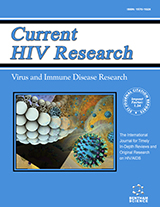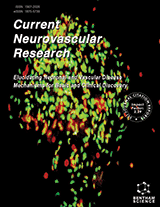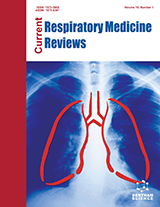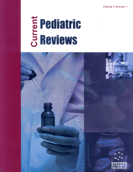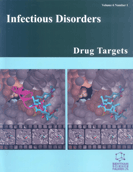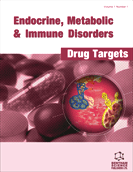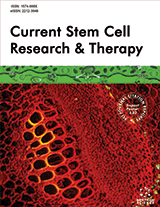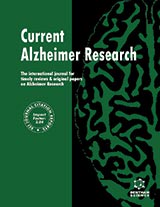Abstract
Most of the HIV-infected long term survivors show strong CD8+ cell noncytotoxic antiviral response (CNAR) that plays as an important factor for maintaining the relative healthy state of infected individuals. HIV infected former blood donors (FBDs) in Anhui, China are the unique population that considered infected by the same or a related HIV strain by the same exposure route, and is better to be studied for viral and host immunological factors associated with disease progression, such as CNAR. We examined CNAR in 63 asymptomatic untreated HIV infected FBDs with different CD4+ cell counts and plasma viral loads. The average CD8+ : CD4+ cell ratio to reach 90% suppression of HIV replication in the groups with CD4+ cell counts of > 500, 300-500 and < 300 cells/μl were 0.85 : 1, 1.47 : 1 and 1.88 : 1 respectively (P < 0.0001). The average CD8+ : CD4+ cell ratio to reach 90% suppression of HIV replication was 1.07 : 1 and 1.66 : 1 in the group with plasma viral load of < 30,000 and > 30,000 RNA copy/ml respectively (P=0.0002). The results indicated that CNAR activity in long-term HIV-1 infected FBDs correlates directly with CD4+ cell counts, and correlates reversely with plasma viral loads. Our findings in long term infected FBDs confirm the clinical relevancy of CNAR and suggest that CNAR could be an additional marker to help determine the optimal time for starting therapy in HIV infected person.
Keywords: HIV, CNAR, CD4+ cell count, former blood donor (FBD), long-term survivor, acute infection assay
Current HIV Research
Title: CD8+ Cell Noncytotoxic Antiviral Response in Long-Term HIV-1 Infected Former Blood Donors in China
Volume: 7 Issue: 4
Author(s): Lin Yuan, Liying Ma, Xiujuan Fan, Yi Feng, Hong Peng, Quanbi Zhao, Yuhua Ruan, J. A. Levy and Yiming Shao
Affiliation:
Keywords: HIV, CNAR, CD4+ cell count, former blood donor (FBD), long-term survivor, acute infection assay
Abstract: Most of the HIV-infected long term survivors show strong CD8+ cell noncytotoxic antiviral response (CNAR) that plays as an important factor for maintaining the relative healthy state of infected individuals. HIV infected former blood donors (FBDs) in Anhui, China are the unique population that considered infected by the same or a related HIV strain by the same exposure route, and is better to be studied for viral and host immunological factors associated with disease progression, such as CNAR. We examined CNAR in 63 asymptomatic untreated HIV infected FBDs with different CD4+ cell counts and plasma viral loads. The average CD8+ : CD4+ cell ratio to reach 90% suppression of HIV replication in the groups with CD4+ cell counts of > 500, 300-500 and < 300 cells/μl were 0.85 : 1, 1.47 : 1 and 1.88 : 1 respectively (P < 0.0001). The average CD8+ : CD4+ cell ratio to reach 90% suppression of HIV replication was 1.07 : 1 and 1.66 : 1 in the group with plasma viral load of < 30,000 and > 30,000 RNA copy/ml respectively (P=0.0002). The results indicated that CNAR activity in long-term HIV-1 infected FBDs correlates directly with CD4+ cell counts, and correlates reversely with plasma viral loads. Our findings in long term infected FBDs confirm the clinical relevancy of CNAR and suggest that CNAR could be an additional marker to help determine the optimal time for starting therapy in HIV infected person.
Export Options
About this article
Cite this article as:
Yuan Lin, Ma Liying, Fan Xiujuan, Feng Yi, Peng Hong, Zhao Quanbi, Ruan Yuhua, Levy A. J. and Shao Yiming, CD8+ Cell Noncytotoxic Antiviral Response in Long-Term HIV-1 Infected Former Blood Donors in China, Current HIV Research 2009; 7 (4) . https://dx.doi.org/10.2174/157016209788680561
| DOI https://dx.doi.org/10.2174/157016209788680561 |
Print ISSN 1570-162X |
| Publisher Name Bentham Science Publisher |
Online ISSN 1873-4251 |
 2
2
- Author Guidelines
- Bentham Author Support Services (BASS)
- Graphical Abstracts
- Fabricating and Stating False Information
- Research Misconduct
- Post Publication Discussions and Corrections
- Publishing Ethics and Rectitude
- Increase Visibility of Your Article
- Archiving Policies
- Peer Review Workflow
- Order Your Article Before Print
- Promote Your Article
- Manuscript Transfer Facility
- Editorial Policies
- Allegations from Whistleblowers
Related Articles
-
The Inverse Relationship Between Cancer and Alzheimer's Disease: A Possible Mechanism
Current Alzheimer Research Inflammatory Bowel Disease: Etiology, Pathogenesis and Current Therapy
Current Pharmaceutical Design Phosphoinositide 3-Kinases and Leukocyte Migration
Current Immunology Reviews (Discontinued) Ligands and Therapeutic Perspectives of Adenosine A2A Receptors
Current Pharmaceutical Design Prophylactic and Therapeutic Approaches Against Respiratory Syncytial Virus
Current Medicinal Chemistry - Anti-Infective Agents Biology of Mesenchymal Stem Cells
Current Rheumatology Reviews Immunosuppressive and Antiviral Treatment of Inflammatory Cardiomyopathy
Recent Patents on Cardiovascular Drug Discovery Analysis of the Potential for HIV-1 Vpr as an Anti-Cancer Agent
Current HIV Research Recent Progress in Small Molecular Inhibitors of DNA Gyrase
Current Medicinal Chemistry Production and Purification of Functional Lipids Through Enzymatic and Microorganism-Mediated Processes
Current Organic Chemistry Type 2 Diabetes: An Atherothrombotic Syndrome
Current Molecular Medicine A Comprehensive Review on Exosomes and Microvesicles as Epigenetic Factors
Current Stem Cell Research & Therapy Biomarkers for Alzheimer’s Disease
Current Alzheimer Research Patent Annotations
Recent Patents on Anti-Cancer Drug Discovery Divergent Roles of IRS (Insulin Receptor Substrate) 1 and 2 in Liver and Skeletal Muscle
Current Medicinal Chemistry Aldose Reductase, Still a Compelling Target for Diabetic Neuropathy
Current Drug Targets Risk Factors for Cardiovascular Disease in Psoriasis: Relation to Inflammation Assessed by the Severity and Duration of Illness
Inflammation & Allergy - Drug Targets (Discontinued) Adenoviral Vector-Mediated Gene Transfer for Human Gene Therapy
Current Gene Therapy Oxidative Stress, HDL and Atherosclerosis
Anti-Inflammatory & Anti-Allergy Agents in Medicinal Chemistry Medicinal Plants with Multiple Effects on Cardiovascular Diseases: A Systematic Review
Current Pharmaceutical Design


